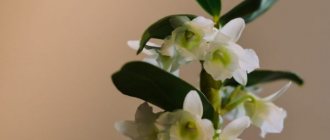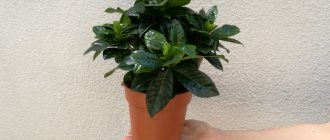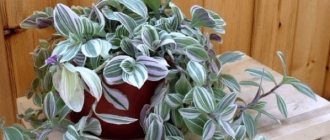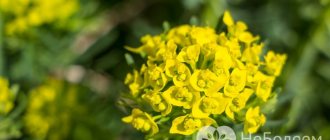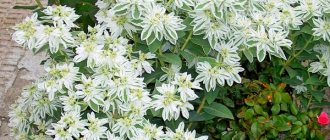Euphorbia indoors is a perennial or annual, very original plant. All the huge number of its species are completely different from each other, some grow with a stem upward, others do not have one at all.
One thing that all types of milkweed have in common is the presence of white (milky) juice, which is released on the cuts. This is where the name actually comes from. Grows mainly in the tropics.
Proper care
This is perhaps the very case when caring for a flower at home does not cause difficulties. Indoor spurge is not at all demanding, but there are standard rules for growing it:
Transplantation should be done only in spring. If you bought it in a pot, be sure to replant it as quickly as possible.
Every flower needs good soil. Euphorbia requires looser soil, for example, if you buy ready-made soil, then choose for cacti.
If you make the soil yourself, then you need to mix: earth, humus and sand, in a ratio of 2 parts earth, 3 humus and 3 sand. Pebbles or expanded clay are suitable for drainage.
How to propagate milkweed at home
Euphorbia flower Milya - how to care for it at home
Young plants require annual replanting as they grow. The pot is gradually increased by 2-3 cm. For spiny euphorbias, use soil for succulent plants; for leafy ones, you can use universal soil. The pot, if it has been used, must be treated with potassium permanganate. Before transplanting, water the plant itself well to make it easier to remove from the old pot. Lightly shake off the soil from the roots, place the plant in the center of the pot and fill the voids with fresh soil.
Important! You need to remember about drainage and the need to weigh the pot down so that the plant does not tip it over.
Usually, replanting is carried out in the spring, but if there is a suspicion of root rot, the flower needs to be saved immediately.
Milkweed can also be propagated by seeds, which it scatters after flowering. They are collected in a bag and stored for no more than a year. Before planting, planting material must be soaked in water. This is an extremely labor-intensive method.
It is much easier to propagate the plant from cuttings. It is better to do this in the fall. To root euphorbia, you need to cut the shoot down to 10 cm, treat the cut area with charcoal, then stick it into wet sand to form a root system. The sand should never be overdried; the soil should be wet. You should also remove the cuttings from the draft and cover them with film like a greenhouse.
What is the easiest way to propagate milkweed? Dividing a bush is the fastest way to get a new plant. When transplanting, simply divide the root system and plant the resulting parts in different pots.
How to water
It is important not to over-water it, otherwise the flower may die. In spring and summer, once a week is enough; if it’s really hot, no more than once a day. During a certain period of “rest” - once a month is enough.
If the plant has not been watered for a long time, do not immediately fill it with large amounts of water. Apply a little at a time to nourish the soil and roots.
As for the most favorable temperature, milkweed is definitely warm for a houseplant. In spring and summer, take it outside more often.
Dry air does not affect the condition of the flower in any way.
Most common types
Mila is a thorny shrub with thin elliptical leaves. Small flowers come in white and yellow.
Mila blooms with white or yellow flowers
The multi-flowered species is mainly planted in gardens. The bush has a cup shape and forms a bright green crown of an elongated oval shape. In early spring it is covered with emerald-yellow flowers. Plant height 70 cm.
Multi-flowered reaches almost a meter in height
The fat one resembles a cactus. It has a cylindrical shape and poorly defined tuberous ribs. Does not grow above 10 cm
Fat one in one cactus
Comb is an evergreen shrub with a ribbed large stem. Its leaves are rounded and elongated, about 20 cm long, they are collected at the top of the stem. The flowers are white and pink on a small stalk.
Comb so called for the ribs on the trunk
Belozhilkovy (white-leaved) is an indoor plant with a strong ribbed stem. Long, round, dark green leaves form at the end of the trunk; the lower ones die off. The flowers are inconspicuous because they are small. This spurge grows up to 1.5 m.
White-leaf is most often grown at home
Triangular is another indoor plant, but it reaches 3 m. It has a thick stem (5-6 cm wide), the jagged edges are covered with small leaves and spines. Rarely blooms.
Tirukalli - a variety without leaves
Euphorbia Tirukalli has no leaves or thorns, but with proper care it blooms.
What can cause harm
Most often, diseases occur due to improper care.
- The flower has begun to rot - most likely it is standing in a draft;
- The appearance of mold and falling leaves is a sign of lack of moisture.
Pests also often attack it: root or mealyworms, aphids, spider mites. All of them can cause yellowing leaves. To solve this problem, it is enough to purchase a special pest control product from a gardening store.
Diseases and pests of milkweed
When growing milkweed, a grower may encounter a fungal disease - gray mold , and pests such as aphids and mealybugs .
Gray rot can quickly destroy a plant, therefore, as soon as a grayish “fluff” is discovered on the leaves, the spurge must be urgently isolated from other plants and a course of spraying with fungicides must be started.
With good care of milkweed, pests rarely attack, but if small green or dark insects are noticed on the stems and leaves, then the flower has become a victim of aphids. To combat it, you can spray with garlic infusion or modern insecticides. The mealybug is difficult to see, but it is indicated by a whitish coating on the leaves. The scale insect can be washed off with a soap or alcohol solution, and then treated with Fitoverm.
The simple maintenance of milkweed allows it to be grown even by those people who spend most of their time at work and cannot devote much time to flowers. In addition, it will grow well in bright offices, dens or libraries.
Characteristics of the Euphorbia flower with photo
Indoor euphorbia is a succulent that accumulates moisture in its fragile shoots and leaves. The tissues of the plant contain milky sap, which is released when damaged. Euphorbia juice contains some toxic substances, which serves as protection against various parasites.
Euphorbia juice
Euphorbia leaves are located opposite each other, they come in different shapes and sizes:
- oblong;
- ovoid;
- torn;
- simple.
As can be seen in the photo, some indoor flower species have underdeveloped leaf plates that resemble thorns or hairs.
Sheet plates
Euphorbia stems are straight or ascending, their shape depends on the type of plant. Most varieties have simple stems covered with leaves, some have spines. There are also species that look like a cactus.
The flowers form a special type of inflorescence - sympodial, or cymose. Each inflorescence is surrounded by two covering leaves. The flowering period occurs in the summer months, and some species bloom in the fall.
Inflorescence
Among the euphorbias there are both dioecious and monoecious plants. In place of the flower, small three-lobed fruits appear, which crack after ripening and break up into three nuts. Each nut contains one smooth seed.
Transplantation into open ground
Before transplanting a flower outdoors, make sure that the threat of frost has passed. Transplantation into open ground includes the following steps:
- Selecting a site and loosening the soil. Keep in mind that soil that is too wet and heavy is not suitable.
- Apply liming to soils with high acidity.
- Dig a wide hole and place drainage in it.
- Add some rotted bark or compost.
- Using the transshipment method, place the flower in the hole along with the root ball of soil.
- Cover with soil, add sand and peat.
- Dig a support next to the hole and tie up the plant.
- The final stage is mulching the milkweed with sawdust or humus.
What to do if the plant does not take root?
Replanting any plant is always stressful. Unfortunately, a flower is not always able to quickly adapt to new conditions and begin to grow with renewed vigor.
There are several reasons why the spurge could not take root in another pot.
- Excessive moisture indicates that spurge needs to be watered less often. Wait until the soil is completely dry.
- If the soil is dry, remove the flower to a cool place with sufficient humidity and spray it. In the future, water with warm water, and the plant will come to life again.
- Perhaps there are microorganisms in the soil that are harmful to the plant and infect the root system. Remove the plant and treat the roots with special products.
Don't forget that milkweed is a poisonous flower. The white juice contained in it can cause a burn if it comes into contact with the skin. To avoid such troubles, replant the plant only while wearing gloves.



